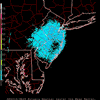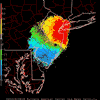“We’ve only just begun…”
As many have already pointed out while watching loons stream north along the coast, or flocks of yellow-rumped warblers move through the still bare canopy, or the myriad of short-distance migrant and local resident birds beginning to establish breeding territories, migration is here. For those new to the site, please take a moment to read the page located here, and accessible from the top right side of this page, titled “Radar Migration Study- Some Background”. For those of you just checking back since last Fall- Welcome! This first couple of weeks I’ll be getting back into the groove of posting radar images and trying to forecast birding conditions, but I’m counting on you to do the ground-truthing and post comments on the blog. I’ve recently updated the site, so it’ll be interesting to see how it handles with the new spam software installed. That probably means that your comments will take awhile before showing up on the site, so please don’t fret- just give it a day to catch up. Hopefully after a little while it’ll all be ironed out. I will forewarn everyone that I will be cutting the posts short around May 15th, since Inga and I are getting married on May 27th and we’re going on our honeymoon right afterward. I’ll get us up and through the World Series of Birding though, and all the tools you need to get your daily fix of migration radar are accessible from this site anyway.
Alright, let’s get things started!
These images are from two nights ago, from sunset on 10/9 to sunrise on 10/10 (click on them to enlarge and see animation). As you can see by the base velocity, the movement across the radar was from the southwest to the northeast, at wind speeds over 15kts greater than the prevailing winds. The base reflectivity image shows a nice expanding circle around the radar after sunset, typical of birds entering the radar’s view and moving across it until a wave of precipitation crosses the screen, and the sun rises.
What does this mean for local birding? Probably not a whole lot, except that maybe a few new birds will be noticed across the state. I usually find these early migrations low in diversity, comprised mostly of our typical winter species. Lots of White-throated Sparrows, American Robins, Red-winged Blackbirds, etc. In will take a few more weeks before we start seeing much greater diversity, but in the meantime, lets keep an eye out for any early goodies that might be getting a jumpstart on the breeding grounds.

Good Birding! 🙂
As many have already pointed out while watching loons stream north along the coast, or flocks of yellow-rumped warblers move through the still bare canopy, or the myriad of short-distance migrant and local resident birds beginning to establish breeding territories, migration is here. For those new to the site, please take a moment to read the page located here, and accessible from the top right side of this page, titled “Radar Migration Study- Some Background”. For those of you just checking back since last Fall- Welcome! This first couple of weeks I’ll be getting back into the groove of posting radar images and trying to forecast birding conditions, but I’m counting on you to do the ground-truthing and post comments on the blog. I’ve recently updated the site, so it’ll be interesting to see how it handles with the new spam software installed. That probably means that your comments will take awhile before showing up on the site, so please don’t fret- just give it a day to catch up. Hopefully after a little while it’ll all be ironed out. I will forewarn everyone that I will be cutting the posts short around May 15th, since Inga and I are getting married on May 27th and we’re going on our honeymoon right afterward. I’ll get us up and through the World Series of Birding though, and all the tools you need to get your daily fix of migration radar are accessible from this site anyway.
Alright, let’s get things started!
These images are from two nights ago, from sunset on 10/9 to sunrise on 10/10 (click on them to enlarge and see animation). As you can see by the base velocity, the movement across the radar was from the southwest to the northeast, at wind speeds over 15kts greater than the prevailing winds. The base reflectivity image shows a nice expanding circle around the radar after sunset, typical of birds entering the radar’s view and moving across it until a wave of precipitation crosses the screen, and the sun rises.
What does this mean for local birding? Probably not a whole lot, except that maybe a few new birds will be noticed across the state. I usually find these early migrations low in diversity, comprised mostly of our typical winter species. Lots of White-throated Sparrows, American Robins, Red-winged Blackbirds, etc. In will take a few more weeks before we start seeing much greater diversity, but in the meantime, lets keep an eye out for any early goodies that might be getting a jumpstart on the breeding grounds.


Good Birding! 🙂